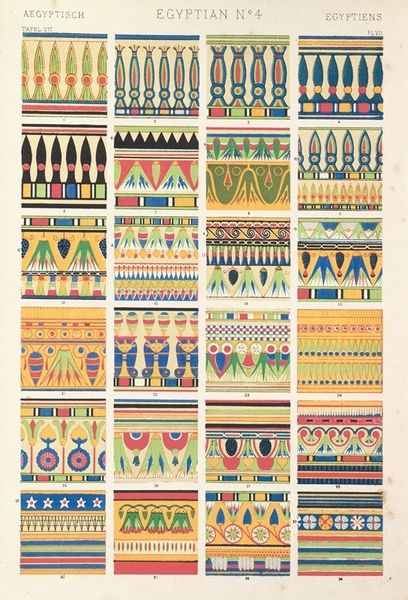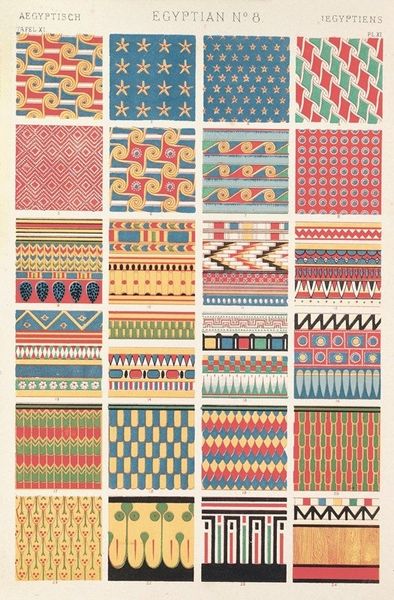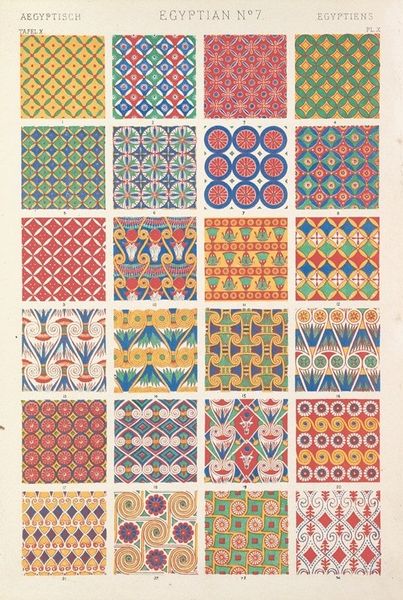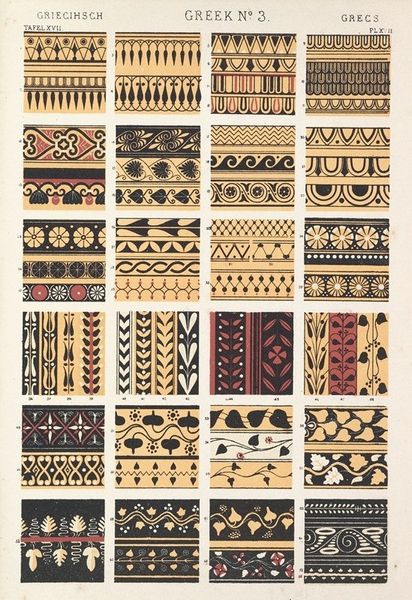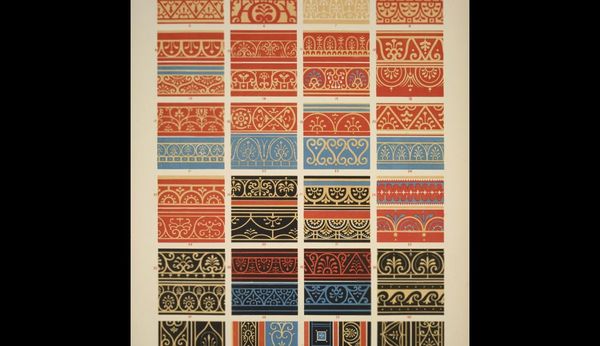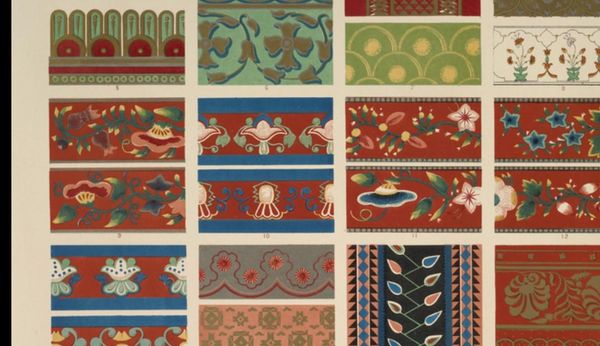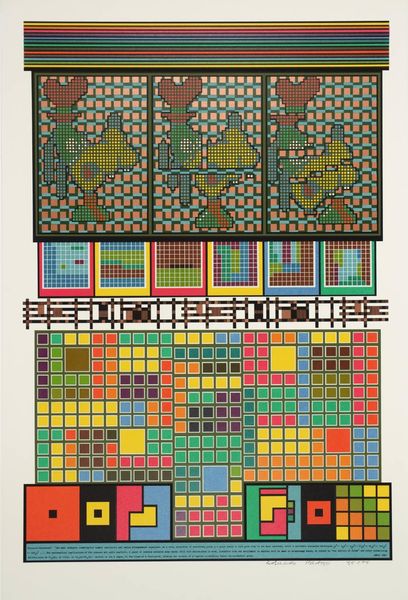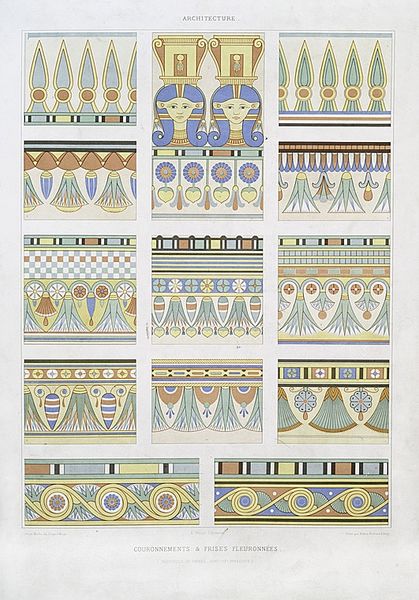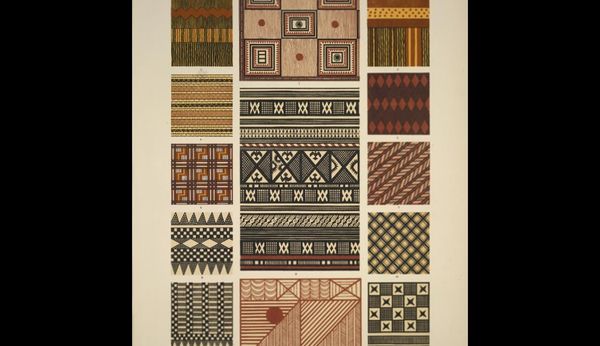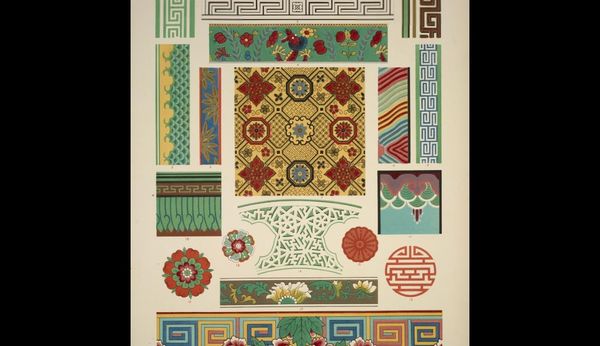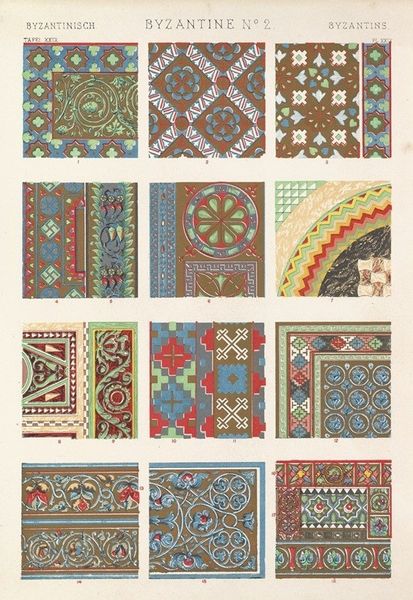
graphic-art, print
#
graphic-art
# print
#
ancient-egyptian-art
#
geometric
#
decorative-art
Copyright: Public Domain: Artvee
Curator: What a vibrant display of geometric patterns! There's such a joyful and ordered feel to the overall arrangement. Editor: Indeed. We're looking at "Egyptian No. 5," a print created in 1856 by Owen Jones. What you're responding to, I suspect, is that ordered logic that reflects his deep interest in the universal principles of design, here exemplified through Egyptian motifs. But is there something also subtly insidious about it? Curator: Insidious? How so? The colors seem so straightforward—primary blues, reds, and yellows. It's almost childlike in its simplicity. Editor: That's partly the point. The accessibility flattens a cultural significance, extracting visual data from a complex social and religious belief system to package it for European consumption. Remember that period: Egyptomania was at its height, fueled by colonial exploits and cultural appropriation. These weren’t just pretty patterns for the Victorians; they represented power dynamics. Curator: So you're saying this ostensibly decorative print participates in a broader project of colonial representation? Taking pieces and claiming an authority of understanding? Editor: Precisely. Even the act of categorization, assigning a number, contributes to an erasure of contextual meaning, and presents these patterns as easily reproducible commodities divorced from their ritual and symbolic purposes. Curator: I suppose that's why, while admiring the intricate geometries, I feel an underlying tension. There's a disconnect, isn't there, between the graphic beauty and the weight of its historical baggage? It's pretty, but, stripped of its significance and intention, what exactly *is* it communicating beyond design ideas? Editor: Exactly! Thinking about the social history helps re-situate our contemporary response to what we are looking at here today. The vibrant color still has appeal and yet what does it represent for all the people affected by this visual representation? Curator: Seeing it like that reshapes my entire perception. It’s not merely about admiring these patterns but also about questioning the context of their production and consumption. Editor: Absolutely, and that’s the constant conversation we have to maintain when engaging with art. It's not always about aesthetic judgement but rather contextual understanding.
Comments
No comments
Be the first to comment and join the conversation on the ultimate creative platform.
